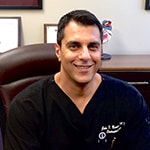Whether your doctor has recommended a pacemaker or you’re experiencing common symptoms of a heart condition, you probably have some questions about pacemakers and how they are implanted. There are some differences in how pacemaker implantation will be performed according to each patient’s needs, so it’s best to schedule an appointment with Dr. Beshai to get the most accurate information regarding your heart health. However, here are some basics about pacemaker implantation.
What is a Pacemaker?
Pacemaker implantation is a surgical procedure performed to place an electrical device to control the heartbeat. Pacemakers consist of a pulse generator, a lead or leads, and electrodes at the end of the lead(s). The pulse generator sends electrical signals through the leads when the small computer within the pacemaker detects that the heartbeat is too slow or irregular, stimulating the heart to beat.
Why is Pacemaker Implantation Done?
A pacemaker generally serves to stimulate the heart to beat normally for patients with conditions that result in a slowed or irregular heartbeat. If your heartbeat is slow or irregular, you may feel symptoms including fatigue, fainting, dizziness, or chest pain. Implanting a pacemaker can relieve these symptoms and improve your overall health.
Some common conditions that could require pacemakers include bradycardia, syncope, hypertrophic cardiomyopathy, and heart failure. In some heart conditions, the medications necessary for treatment may result in slow heartbeats and therefore require backup pacing support.
How is a Pacemaker Implantation Performed?
Pacemaker implantation is performed under local anesthesia to numb the area and IV sedation to keep you relaxed through the procedure. Throughout the procedure, you will be connected to an ECG to monitor your heart’s activity. A plastic tube known as a sheath is first inserted along the blood vessel just under the collarbone, which guides the pacemaker’s lead wires through the blood vessel and into the heart.
Once in place, the lead wires are tested to ensure they are working properly. When this is confirmed, the lead wires are attached to a generator, which can then be placed under the skin through a small incision. After finally confirming that the pacemaker is working properly, the incision is closed with dissolving sutures and biological glue application to the skin.
What are the Next Steps After a Pacemaker Implantation?
After a pacemaker has been implanted, you will be monitored in a recovery room until the sedation wears off. When you are more alert, you can move around the room or eat and drink with some assistance. It’s normal to feel soreness at the placement site as incisions heal. Most patients return to their routines after a few days, but it’s important to avoid lifting heavy objects and limit moving your arms for several weeks after the surgery. You will have postoperative appointments scheduled where your healing can be monitored and your doctor will ensure your pacemaker is working as normal.
Patients with pacemakers must be cautious of metal detectors and avoid MRI scans. Security metal detectors and wands are generally safe, but you should not be exposed for more than a few seconds. After the implantation procedure, you should carry an identification card stating that you have a pacemaker. Many patients also prefer to wear a medical ID bracelet for the same purpose.
Schedule an Appointment
If you have a heart condition that you feel may benefit from a pacemaker, or you have symptoms of a heart condition, it’s important to schedule an appointment with a qualified and experienced cardiac electrophysiologist like Dr. Beshai, MD, FACC, FHRS. To schedule your appointment at the Heart Rhythm Institute of Arizona, in Phoenix, AZ call (480) 634-4449 or request an appointment online.
Dr. Beshai is a board-certified electrophysiologist internationally renowned and respected for his expertise and research. Having published in major medical journals and travelled all over the world to present research, he is dedicated to providing innovative, state-of-the-art care to his patients.


